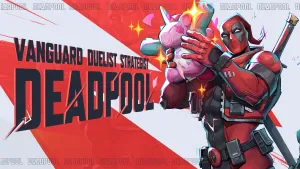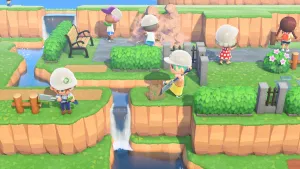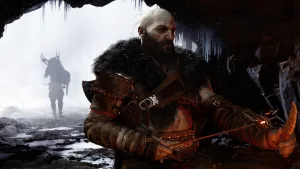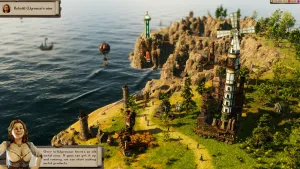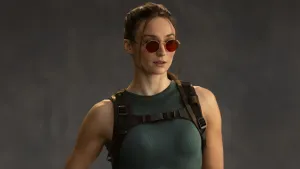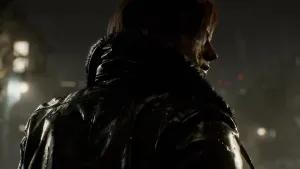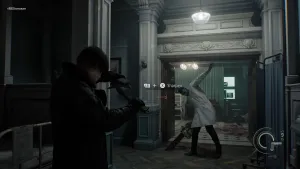Subscribe today to receive the next issue of Game Informer, featuring the Most Anticipated Games of 2026!
Retrospective: Opening Remarks
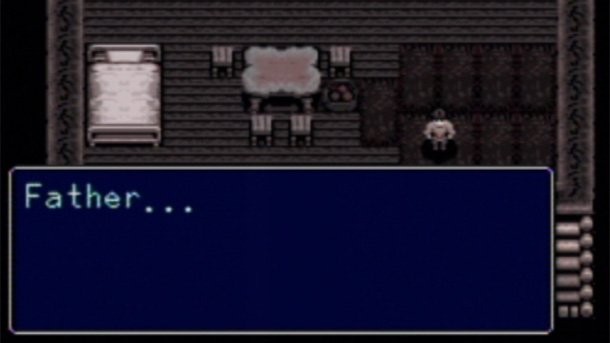
One of the best things about working at Game Informer is our extensive library of classic and contemporary games, affectionately known as The Vault. In addition to being an invaluable resource for our everyday work, it’s a great place to find inspiration. The other day a few of us were talking about how RPG openings have grown increasingly bombastic over the years and how long it takes before players actually get to take control of these games. That got us thinking: Was it much better in the days of, say, the SNES? The system was known for a solid roster of RPGs, and we thought it would be interesting to pick up a few of the games and record the game introductions. In addition to getting a completely unscientific sense of intro length, it would be a fun chance to see how primitive – or awesome – these early stories used to be.
This isn’t meant to be a comprehensive look at the genre on the platform – and it isn’t – but we think it’s an interesting retrospective of the early days of console RPGs.
Brain Lord
Publisher: Enix
Developer: Produce
Release: August 1994
[View:http://gameinformer.com/games/features/m/mediagallery/332234.aspx:610:343]
Brain Lord was developed by Produce, the studio that created the SNES RPG 7th Saga and platformer Super Adventure Island. Brain Lord’s story involves a hero drawn from a family line of heroes, tasked with finding a mysterious tower. The game is notable for a couple of reasons. First, it featured a lot of math-centric puzzles. Additionally, it eschewed traditional leveling-up mechanics in favor of a system that focused exclusively on earning gold and buying better gear.
Breath of Fire
Publisher: Squaresoft
Developer: Capcom
Release: October 1994
[View:http://gameinformer.com/games/features/m/mediagallery/332235.aspx:610:343]
The Breath of Fire series took place in a world with anthropomorphic animals as
well as humans who could transform into dragons. It was developed by Capcom and
featured character designs from Keiji Inafune. Years later the save system from
his Dead Rising game generated controversy for the way it handled character death,
though it was borrowed from the PS2 game Breath of Fire: Dragon Quarter.
Breath of Fire II
Publisher: Capcom
Developer: Capcom
Release: December 1995
[View:http://gameinformer.com/games/features/m/mediagallery/332237.aspx:610:343]
The sequel may have been set 500 years after the events of the first Breath of Fire game, but it was released in North America barely a year after its predecessor. Breath of Fire II’s story centers around a false church and its idols, which was pretty strong stuff for the time. Other than that, the most notable thing about the sequel is that Capcom published the game itself in North America, instead of Squaresoft.
Drakkhen
Publisher: Infogrames
Developer: Kemco
Release: 1991
[View:http://gameinformer.com/games/features/m/mediagallery/332238.aspx:610:343]
The PC port of Drakkhen was one of the earliest RPGs available for the SNES in North America. It featured pseudo-3D world exploration and more traditional sprite-based action for combat and interior areas. The story was slim and often riddled with translation errors, making it tough to follow at times.
EarthBound
Publisher: Nintendo
Developer: Ape
Release: June 1995
[View:http://gameinformer.com/games/features/m/mediagallery/332239.aspx:610:343]
Nintendo’s classic RPG bucks convention at every turn. It’s set in a contemporary world, with pizza, a blues band, and UFOs. The only people who can save the day are Ness and his young friends. The game got a big push from Nintendo, but it never gained widespread traction in the states. A Game Boy Advance sequel was released in Japan in 2006, but Nintendo has declined to release it elsewhere. Ness’ appearances in the Smash Bros. series will have to serve as a consolation.
Illusion of Gaia
Publisher: Nintendo
Developer: Quintet/Enix
Release: September 1994
[View:http://gameinformer.com/games/features/m/mediagallery/332240.aspx:610:343]
Set in a fantastical version of Earth, Illusion of Gaia lets players explore the world and see real-world monuments as they battle evil forces. It’s a simple and elegant action RPG with a pretty slick gimmick: instead of earning experience points, players get rewarded for defeating all enemies in a room.
Secret of Mana
Publisher: Square
Developer: Square
Release: October 1993
[View:http://gameinformer.com/games/features/m/mediagallery/332241.aspx:610:343]
The Secret of Mana was unusual in that it allowed three players to play the game cooperatively—provided they had access to the Super Multitap accessory. Each of the game’s three heroes had their own strengths, and solo players could swap between them at will. The game is as good as its excellent soundtrack, which is why it’s remembered as being one of the best SNES games period.
Shadowrun
Publisher: Data East
Developer: Beam Software
Release: November 1993
[View:http://gameinformer.com/games/features/m/mediagallery/332242.aspx:610:343]
Shadowrun is an interesting artifact of the ‘90s obsession with cyberculture.
Based on the pen and paper RPG, the SNES game put players in the role of a hacker
in an alternate vision of Seattle where Shaman and shapeshifters battled in the
streets. Hacking was a key skill, as well as the ability to shoot straight. A Genesis
game was released, though it had nothing in common with the SNES version aside from
the source material. Shadowrun disappeared from video games until it was brought
back in the disappointing PC and Xbox 360 FPS.
Super Mario RPG: Legend of the Seven Stars
Publisher: Nintendo
Developer: Square
Release: May 1996
[View:http://gameinformer.com/games/features/m/mediagallery/332244.aspx:610:343]
Super Mario RPG gave players a whole new perspective on Mario. The game, which took
place in an isometric viewpoint, let Mario explore the world in eight directions.
The game’s combat was a hybrid of action and turn-based RPG systems, letting
players influence the effectiveness of their menu-selected attacks by pressing buttons
at the right time. The game is also one of the rare examples of titles where Mario
and Bowser set aside their differences and team up.
Ultima VI: The False Prophet
Publisher: Origin Systems
Developer: Origin Systems
Release: 1993
Another early PC port, Ultima VI: The False Prophet is perhaps most noteworthy for its lousy translation. Many of the things that made the original title good, such as the character-creation system, were stripped during the move to the SNES.
[View:http://gameinformer.com/games/features/m/mediagallery/332246.aspx:610:343]
